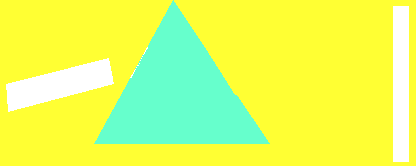Dispersion

Click to hide this animation
Dispersion

Click to hide this animation
Droplets of water refract each component colour of white light by a different amount thus separating out the colours.

When white light shines into a sperical water drop it is refracted slightly. The light then bounces off the inside of the opposite wall of the water drop by total internal reflection. The light then undergoes a second refraction as it leaves the water droplet. The double refraction of light splits into its component colours.
Click to hide
|
Colour
|
|||||||||||||||||
|
The pattern formed by the dispersion of light is called a spectrum. The refractive index of water differs slightly for different colours as shown in the table below.
Explain with reference to the table above how a rainbow occurs. |
What is light and where does it come from? A scientist and mathematician named Isaac Newton conducted experiments to answer this question. In one experiment he shone a beam of white light through a glass prism and on to a wall. To his surprise the white light separated out into different colours. The order of the colours was red, orange, yellow, green, blue, indigo and violet. The separation of colours by this method is called dispersion. |
||||||||||||||||
| Heat
energy is often converted into light energy of different wavelengths (colours).
When different atoms are heated their electrons absorb this heat energy
and jump to higher energy level. This high energy state can not be sustained
for long and the electron returns to its original position by giving off
the energy in the form of light. The colour depends on the amount of energy
involved.
Fireworks
are an excellent example of the conversion of heat energy into light energy.
|
|||||||||||||||||
|
|||||||||||||||||